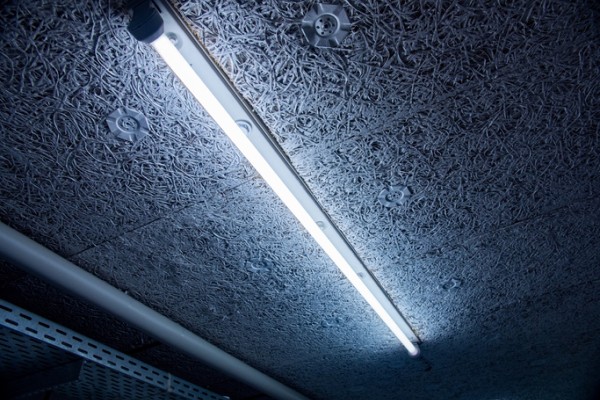
Fluorescent lights were once the go-to choice for kitchens, garages, laundries and offices across Australia. And while they’re slowly being replaced by energy-efficient LED lighting, you’ll still find fluorescent fittings in plenty of older homes and renovations.
If you’re working with these fittings — whether you’re replacing globes, upgrading mounts or switching to LEDs — it’s important to understand how fluorescent light mounts work and how to deal with them safely.
What is a fluorescent light mount?
A fluorescent light mount (or fixture) is the structure that holds a fluorescent tube in place and delivers the electrical current required to operate it. These mounts are usually installed on the ceiling or under cabinets, and consist of:
- A base plate or housing: Secured to the ceiling or wall, often metal or plastic.
- Tube holders or sockets (called lampholders): Located at either end of the tube, these hold the pins of the fluorescent globe in place.
- A starter and ballast: Older fittings include a starter (a small cylindrical plug) and a ballast (which controls voltage). Newer models may use electronic ballasts instead.
Some mounts are visible (surface-mounted), while others are recessed into ceiling panels or cabinetry.
Common types of fluorescent mounts
There are several types of mounts, each suited to different uses:
Surface-mounted batten fittings
The most common style in homes and garages. The tube is exposed or protected by a simple plastic diffuser. These are easy to access and replace.
Recessed troffer fittings
Common in office-style suspended ceilings. These hold multiple tubes and sit flush with the ceiling grid. Less common in homes unless there’s a drop ceiling.
Under-cabinet mounts
Slimline fluorescent mounts used in kitchens or workspaces. These are usually hidden under shelves or cupboards to provide task lighting.
Circular fittings
Feature a circular fluorescent tube, often with a central diffuser. Found in some older bathrooms and bedrooms.
Each type will require a slightly different approach if you’re replacing the globe or considering an upgrade.
Fluorescent mounts and energy efficiency
While fluorescent lights were once seen as an energy-saving step up from incandescent globes, they’ve now been overtaken by modern LED lighting. LEDs:
- Use less power
- Last much longer
- Don’t contain hazardous materials like mercury
- Turn on instantly, without flicker
Many homeowners are now replacing their fluorescent fittings with LED battens or tube-style retrofits that use the same mount structure.
If you’re still using fluorescent fittings, you might also be dealing with non-dimmable lighting, flickering, or slow start-up times — all signs it’s time for an upgrade.
Upgrading to LED: Can you reuse the mount?
Yes — in many cases, you can replace fluorescent tubes with LED retrofit tubes that fit the same sockets. However, compatibility depends on the mount’s wiring and ballast type.
There are two main options:
Plug-and-play LED tubes
Designed to work with your existing fluorescent ballast and wiring. Just remove the old tube and insert the new one. Simple — but may not work with all fixtures.
Ballast-bypass LED tubes
These require the existing ballast to be disconnected by a licensed electrician, who will rewire the fitting for direct connection to mains power. It’s more work up front, but often more reliable in the long run.
For worn-out mounts or broken lampholders, it’s often better to replace the entire fitting with a modern LED batten light, which offers better light distribution, lower maintenance and no flicker.
Safety and recycling
Fluorescent fittings and globes contain materials that require careful handling — particularly the mercury inside the tubes. If you’re removing old globes or disposing of entire mounts:
- Never put fluorescent tubes in household bins
- Take used globes to a designated recycling facility or participating retailer
- Use gloves and avoid breaking the tube
- Call a licensed electrician if you’re replacing the fixture or rewiring
Replacing fluorescent lights with LED alternatives not only improves safety and efficiency, but also eliminates the need to handle hazardous materials in future.
When to replace the whole mount
It’s worth replacing the entire fluorescent fitting if:
- The lampholders are cracked or brittle
- The starter or ballast has failed
- You’re dealing with flickering or buzzing
- You want to switch to a more modern, energy-efficient fixture
- The mount is part of a larger lighting upgrade or home renovation
A new LED batten fitting can be installed in the same location, often with minimal ceiling patching or modification.
The bottom line
Fluorescent light mounts are still common in many homes, but they’re rapidly being replaced by safer, more efficient LED fittings. Understanding how these mounts work — and how to safely recycle or upgrade them — makes it easier to modernise your lighting and reduce long-term maintenance.





